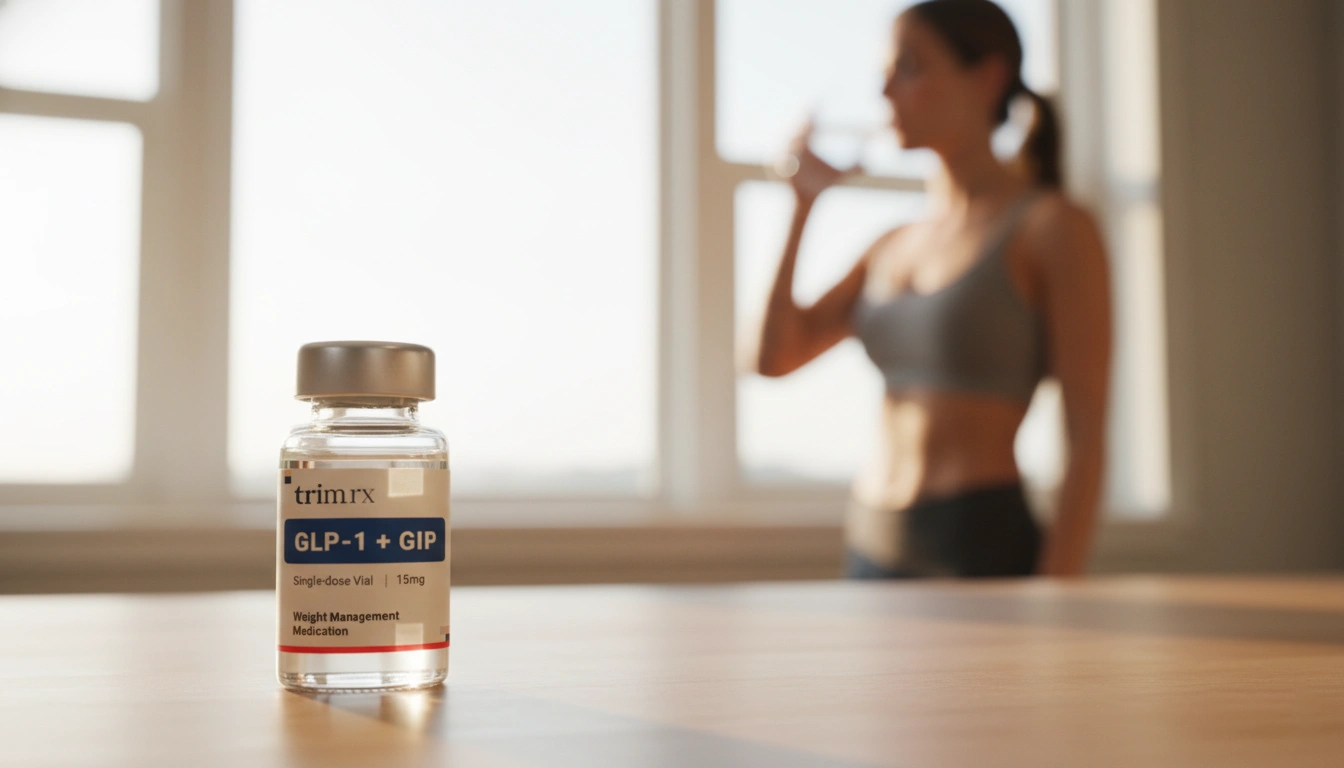How to Raise GLP-1 Naturally: A Comprehensive Guide to Enhancing Your Well-Being

Introduction
Did you know that our bodies produce a hormone called GLP-1 that plays a crucial role in regulating blood sugar levels and appetite? This hormone, known as glucagon-like peptide-1 (GLP-1), is released in the gut after we eat and is vital for our metabolic health. In fact, it stimulates the release of insulin, which helps lower blood sugar levels, and slows down digestion, promoting a feeling of fullness. Yet, despite its importance, many people are unaware of how to naturally boost their GLP-1 levels.
In recent years, GLP-1 has gained significant attention, especially with the rise of prescription medications like semaglutide (Ozempic, Wegovy) and tirzepatide (Mounjaro, Zepbound), which mimic the effects of this hormone to aid in weight loss and diabetes management. However, the question remains: how can we naturally enhance GLP-1 levels through our diet and lifestyle?
In this blog post, we will explore various approaches to raising GLP-1 naturally, including dietary changes, exercise, and other lifestyle adjustments. We aim to provide you with actionable insights that can help you optimize your health and well-being. Together, we will delve into the science behind GLP-1, the foods that can stimulate its production, and practical strategies for incorporating these elements into your daily routine.
By the end of this post, you’ll not only understand the significance of GLP-1 in your body but also how to effectively raise it naturally. We’ll cover the key nutrients that promote GLP-1 secretion, the role of exercise, and even some common myths surrounding this hormone. Additionally, we’ll highlight how TrimRx’s personalized weight loss programs align with these principles, ensuring that you have the support needed for a healthier lifestyle.
What is GLP-1 and Why is It Important?
Glucagon-like peptide-1 (GLP-1) is an incretin hormone produced in the intestines. It plays a vital role in glucose metabolism and appetite regulation. When we consume food, GLP-1 is released into the bloodstream, where it performs several key functions:
- Stimulating Insulin Release: GLP-1 prompts the pancreas to release insulin, which helps lower blood sugar levels by facilitating the uptake of glucose into cells.
- Inhibiting Glucagon Secretion: Glucagon is a hormone that raises blood sugar levels. GLP-1 inhibits its release, further contributing to blood sugar regulation.
- Slowing Gastric Emptying: By slowing down the rate at which food leaves the stomach, GLP-1 helps to prolong feelings of fullness, which can aid in weight management.
- Promoting Satiety: GLP-1 acts on the brain to reduce appetite, thereby helping to control food intake.
Given these essential functions, it’s clear that maintaining healthy GLP-1 levels is crucial for metabolic health, weight management, and overall well-being.
Foods That Increase GLP-1 Levels
One of the most effective and natural ways to enhance GLP-1 secretion is through dietary choices. Certain foods are known to stimulate the production of this hormone, and incorporating these into our meals can support our health goals. Here are some key foods and nutrients that can help raise GLP-1:
1. High-Protein Foods
Protein is a vital macronutrient known to influence GLP-1 secretion positively. Foods rich in protein can promote satiety and help regulate blood sugar levels. Some protein sources include:
- Eggs: Eggs are an excellent source of high-quality protein and have been linked to increased GLP-1 levels. Research has shown that meals containing eggs can lead to lower post-meal blood glucose levels and reduced hunger.
- Lean Meats: Chicken, turkey, and lean cuts of beef are great options for increasing protein intake.
- Fish: Fatty fish like salmon and sardines not only provide protein but also healthy omega-3 fatty acids, which can further support metabolic health.
2. Fiber-Rich Foods
Dietary fiber, especially soluble fiber, plays a significant role in promoting GLP-1 secretion. Fiber slows digestion and helps maintain stable blood sugar levels. Foods high in fiber include:
- Whole Grains: Oats, barley, and whole wheat are excellent sources of soluble fiber, which can stimulate GLP-1 release.
- Fruits and Vegetables: Berries, apples, carrots, and broccoli are not only rich in fiber but also packed with essential vitamins and minerals.
- Legumes: Beans, lentils, and chickpeas provide both protein and fiber, making them a powerful addition to any meal.
3. Healthy Fats
Incorporating healthy fats into our diet can also enhance GLP-1 levels. Some beneficial sources of healthy fats include:
- Avocados: Rich in monounsaturated fats and fiber, avocados can contribute to increased GLP-1 secretion.
- Nuts and Seeds: Almonds, walnuts, and chia seeds provide healthy fats and protein, making them excellent choices for snacks.
- Olive Oil: A staple of the Mediterranean diet, olive oil has been associated with higher GLP-1 levels and better insulin sensitivity.
4. Fermented Foods
Fermented foods, such as yogurt and kimchi, can promote a healthy gut microbiome, which may influence GLP-1 secretion through the production of short-chain fatty acids (SCFAs). The fermentation process helps enhance the absorption of nutrients and supports digestive health.
5. Green Tea
Green tea contains compounds called catechins, which have been shown to enhance GLP-1 levels and improve insulin sensitivity. Incorporating green tea into your daily routine can be a simple yet effective way to support GLP-1 production.
Summary of Nutritional Strategies
In summary, focusing on a balanced diet rich in protein, fiber, healthy fats, and fermented foods can significantly contribute to raising GLP-1 levels naturally. By incorporating these foods into our meals, we can support not only our GLP-1 production but also our overall health.
The Role of Physical Activity
Exercise is another powerful tool for enhancing GLP-1 levels. Regular physical activity has been shown to improve insulin sensitivity and stimulate the release of GLP-1. Here are some insights into how exercise affects GLP-1:
1. Types of Exercise
Both aerobic and resistance training have been linked to increases in GLP-1 secretion. Engaging in a variety of exercise types can provide comprehensive benefits for metabolic health:
- Aerobic Exercise: Activities like walking, cycling, and swimming can enhance cardiovascular health and promote GLP-1 release. Aim for at least 150 minutes of moderate-intensity aerobic activity each week.
- Resistance Training: Incorporating weightlifting or bodyweight exercises into your routine can help build muscle mass and improve metabolic function. Aim for at least two days of resistance training per week.
2. Duration and Intensity
Research suggests that both short bouts of high-intensity exercise and longer, moderate-intensity sessions can lead to increased GLP-1 levels. Finding a routine that works for you and fits your lifestyle is essential for long-term success.
Summary of Exercise Benefits
Incorporating regular physical activity into our lives not only supports GLP-1 production but also enhances overall health, including weight management, cardiovascular fitness, and mental well-being.
Common Myths About Raising GLP-1
As interest in GLP-1 has grown, so has the spread of misinformation. Let’s debunk some common myths associated with raising GLP-1 naturally:
Myth 1: Supplements Can Replace Natural Sources
While some supplements claim to boost GLP-1 levels, it’s important to remember that natural food sources provide a broader range of nutrients and benefits beyond just GLP-1 stimulation. Whole foods offer fiber, vitamins, minerals, and antioxidants that supplements may lack.
Myth 2: All Foods Raise GLP-1 Equally
Not all foods have the same effect on GLP-1 secretion. Foods high in processed sugars and unhealthy fats can have the opposite effect, leading to insulin resistance and poor metabolic health. Focusing on whole, unprocessed foods is key to effectively raising GLP-1 levels.
Myth 3: Instant Results from Food or Exercise
Raising GLP-1 levels naturally is a gradual process that requires consistent dietary and lifestyle changes. While some individuals may notice short-term effects, long-term improvements will come from sustained efforts over time.
Integrating GLP-1 Strategies into Your Lifestyle
Now that we’ve explored the nutritional and exercise strategies for raising GLP-1 levels naturally, let’s consider how to integrate these practices into our daily lives. Here are some practical tips:
1. Meal Planning
Take the time to plan your meals for the week, focusing on incorporating a variety of protein sources, fiber-rich foods, and healthy fats. This can help ensure you’re consistently providing your body with the nutrients it needs to optimize GLP-1 production.
2. Snack Smart
Choose healthy snacks that combine protein, fiber, and healthy fats. For example, a handful of nuts, Greek yogurt with berries, or hummus with vegetables can help keep you satisfied and support GLP-1 levels.
3. Stay Active
Make physical activity a regular part of your routine. Find activities you enjoy, whether it’s dancing, hiking, or joining a fitness class. Aim to incorporate both aerobic and resistance exercises into your week.
4. Monitor Progress
Consider tracking your dietary intake and exercise routine to identify patterns and areas for improvement. This can help you stay accountable and make adjustments as needed for optimal health.
5. Seek Support
If you’re struggling to make changes on your own, consider reaching out for support. TrimRx offers personalized weight loss programs that combine medical supervision with evidence-based strategies to help you achieve your health goals. Taking our free assessment quiz can be an excellent first step toward discovering the best plan for you: Take the Quiz.
Conclusion
Raising GLP-1 levels naturally is an achievable goal that can significantly improve your metabolic health, appetite regulation, and overall well-being. By focusing on a balanced diet rich in protein, fiber, and healthy fats, alongside regular physical activity, we can support our body’s natural processes and enhance GLP-1 secretion.
Remember, the journey toward better health is a collaborative effort, and we at TrimRx are here to support you every step of the way. Our personalized weight loss programs and compassionate care are designed to help you embrace a healthier lifestyle. If you’re interested in additional support, don’t forget to explore our quick-access supplements, such as GLP-1 Daily Support and Weight Loss Boost.
By taking proactive steps to enhance your GLP-1 levels, you’re not just working towards weight loss or better blood sugar control; you’re investing in your overall health and future. Let’s embark on this journey together!
FAQ
What is GLP-1 and what does it do?
GLP-1, or glucagon-like peptide-1, is a hormone produced in the intestines that helps regulate blood sugar levels and appetite. It stimulates insulin release, inhibits glucagon secretion, and promotes feelings of fullness.
How can I raise GLP-1 levels naturally?
You can raise GLP-1 levels naturally by consuming a diet rich in protein, fiber, and healthy fats, exercising regularly, and incorporating fermented foods into your meals.
Are supplements effective for increasing GLP-1?
While some supplements claim to boost GLP-1 levels, whole food sources are generally more effective due to their additional nutrients and benefits.
Is exercise important for GLP-1 secretion?
Yes, regular physical activity has been shown to enhance GLP-1 levels and improve insulin sensitivity, making exercise an essential component of a healthy lifestyle.
How long does it take to see results from dietary changes?
Raising GLP-1 levels naturally through diet and exercise is a gradual process that requires consistency. Results may vary, but sustained efforts can lead to significant improvements over time.

Transforming Lives, One Step at a Time
Keep reading
7 Tips for Sticking to GLP-1 Injection Schedules
Seven practical strategies to keep weekly GLP‑1 injections on schedule—pick a routine day, set reminders, manage side effects, rotate sites, and avoid missed doses.
Custom GLP-1 Dosing for Kidney Disease
Personalized GLP-1 dosing for CKD patients with monitoring, dehydration and hypoglycemia risk mitigation, and guidance across all kidney disease stages.
Semaglutide vs Tirzepatide: Approved Uses
Two leading diabetes and weight-loss drugs differ in FDA-approved benefits — one adds heart, kidney and liver protection; the other treats obstructive sleep apnea.



